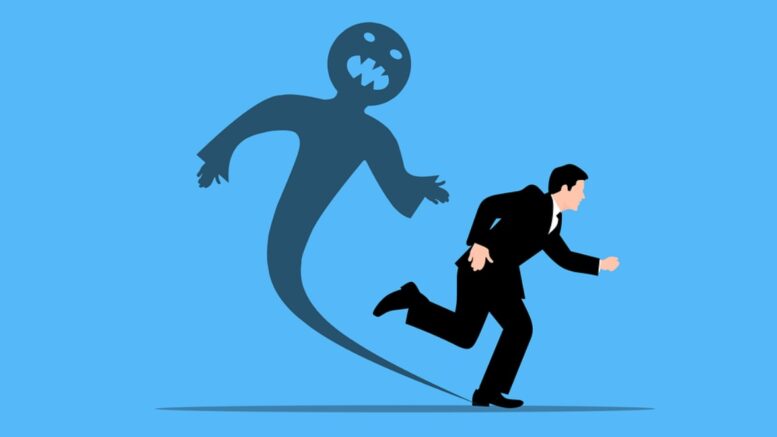Everyone gets restless, frazzled, and anxious at some point, but if you often feel worried, tense, or always on edge, you might have an anxiety disorder. Anxiety disorder is more than simple worry or fear; it does not go away and, if ignored, may get worse.
Clinically, anxiety disorder is a group of mental illnesses that causes constant and overwhelming fear; you may experience a pounding heart, sweating, and nervousness. You may be experiencing an anxiety disorder if:
- The anxiety interferes with your ability to function
- Your emotions get triggered unpredictably
- You can’t control your response to certain situations
If you are facing any of the above symptoms or something similar, it’s important to find a therapist to treat your anxiety.Your provider can help you deal with your disorder and give you guidance to overcome it.
Who is at High Risk of Anxiety Disorders?
Anxiety disorders may affect individuals of all ages, backgrounds, and lifestyles. While anyone can develop such a disorder, there are a few factors that can increase the risk; some of them are:
Family History:
If you have someone close in the family suffering from anxiety, you may genetically get predisposed to it.
Traumatic Experiences:
Physical abuse, accidents, natural disasters, or witnessing violence are some traumatic experiences that can increase the risk of developing anxiety.
Substance Abuse:
Anything related to drugs or alcohol can hamper mental health and may increase the risk of disorders.
Personality Traits:
Certain personality traits, such as low self-esteem or being highly self-conscious, can make you more vulnerable to anxiety disorders.
Other Mental Health Conditions:
Individuals with mental health disorders such as ADHD (Attention-deficit/hyperactivity disorder) or obsessive-compulsive disorder (OCD), and depression may increase the chance of developing an anxiety disorder.
What Are the Different Types of Anxiety Disorders?
GAD (Generalized Anxiety Disorder):
These disorders involve persistent and excessive tension that hinders daily work activities. This regular stress and worry give rise to the symptoms such as difficulty concentrating, muscle tension, sleep issues, feeling edge, and more.
Panic Disorder:
The primary symptoms of panic disorder include recurrent panic attacks and a combination of psychological and physical distress. Some other symptoms you may observe during panic disorder are:
- Sweating
- Palpitations or increased heart rate
- Shaking or trembling
- Feeling short of breath
- Chest pain
- Feeling of choking
- Dizziness or feeling faint
- Nausea or abdominal pains
- Feeling detached
- Fear of dying
Phobia:
A phobia is an excessive and persistent fear of a particular object, situation, or activity which is not harmful. Some of the typical phobias include fear of depth, flying or fear of spiders, public speaking, etc.

Social Anxiety Disorder:
Social phobia or social anxiety disorder has particular Anxiety or discomfort about being humiliated, rejected, or embarrassed in social interactions. People with this disorder avoid such situations or participate with great Anxiety. Common examples are fear of public speaking, meeting new people, attending public events, and more.
Agoraphobia:
Agoraphobia is a fear of a situation where escape is difficult or embarrassing. People with agoraphobia often avoid certain situations or places, which can significantly limit their daily activities and social interactions.
Common situations that people with agoraphobia may avoid or find distressing include:
- Crowded places, such as shopping malls, stadiums, or public transportation.
- Open spaces, such as parks, bridges, or parking lots.
- Enclosed spaces, such as elevators, tunnels, or small rooms.
- Being outside of the home alone.
What are the Symptoms of Anxiety Disorder?
While symptoms may vary from person to person and the type of disorder, general ones include:
Physical symptom:
- Muscle tension
- Numbness
- Cold or Sweaty hands
- Nausea
- Short of breath
Mental Symptoms:
- Panic of fear
- Uneasiness
- Repeated thoughts of traumatic experiences or flashbacks
- Uncontrollable or obsessive thoughts
- Nightmares
Behavioral symptoms
- Sleep issues
- Ritualistic behavior like over-cleaning or over-washing hands
- Inability to keep yourself calm or still
How are Anxiety Disorders Diagnosed?
If you are having symptoms of an anxiety disorder, you need to connect with your healthcare provider. After the complete examination, the healthcare provider will start the process.
While there are no such lab scans or tests that can diagnose the disorder, you may get through some normal tests to identify the physical conditions that may be causing the stress.
If your healthcare professional finds no symptoms of physical illness, they may refer you to a psychologist. Psychologists are trained professionals who specialize in treating mental conditions. They may use specially designed interview and assessment procedures to identify the ailment.
How Does Talk Therapy Treat Anxiety Disorder?
Psychotherapy (or talk therapy, counseling, or simply “therapy”) is one of the most effective treatment options for anxiety disorder. Some of the common psychotherapy approaches to treat anxiety disorder are:
CBT (Cognitive-behavioral therapy):
CBT is one of the most effective therapies for treating anxiety disorders. It focuses on identifying the negative thoughts that contribute to Anxiety. By gaining awareness of distorted thinking and replacing it with more realistic thoughts, CBT helps in reducing anxiety symptoms.
DBT (Dialectical Behavior Therapy):
DBT was initially used to treat personality disorders but has also been used to treat anxiety disorders. DBT combines the elements of CBT with some mindfulness techniques and skills for emotional regulation.
Psychodynamic Therapies:
Psychodynamic therapies explore work on past experiences, unconscious conflicts, and early relationships to treat anxiety symptoms. It works on treating underlying patterns and working on the unresolved issues of the person.
Mindfulness-based Techniques:
MBSR (Mindfulness-Based Stress Reduction) and MBCT (Mindfulness-Based Cognitive Therapy) use mindfulness practices to identify anxiety issues.
Acceptance and Commitment Therapy (ACT):
ACT helps individuals develop acceptance and mindfulness skills to cope with Anxiety. It emphasizes accepting anxious thoughts and feelings rather than trying to eliminate them. By learning to observe and detach from anxious thoughts, individuals can gain greater psychological flexibility and engage in behaviors that align with their values, even in Anxiety.
Conclusion
In conclusion, living with anxiety disorder can be a challenging and overwhelming experience, but there is hope for managing and overcoming it. Through understanding, self-care, and professional support, individuals with anxiety disorder can find relief and improve their overall well-being.
